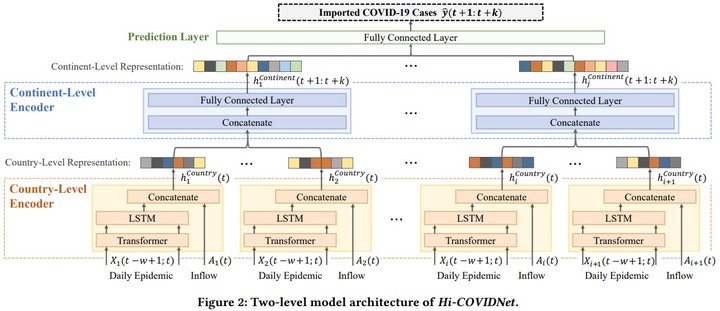Hi-COVIDNet: Deep Learning Approach to Predict Inbound COVID-19 Patients and Case Study in South Korea (KDD 2020)

Abstract
The escalating crisis of COVID-19 has put people all over the world in danger. Owing to the high contagion rate of the virus, COVID-19 cases continue to increase globally. To further suppress the threat of the COVID-19 pandemic and minimize its damage, it is imperative that each country monitors inbound travelers. Moreover, given that resources for quarantine are often limited, they must be carefully allocated. In this paper, to aid in such allocation by predicting the number of inbound COVID-19 cases, we propose Hi-COVIDNet, which takes advantage of the geographic hierarchy. Hi-COVIDNet is based on a neural network with two-level components, namely, country-level and continent-level encoders, which understand the complex relationships among foreign countries and derive their respective contagion risk to the destination country. An in-depth case study in South Korea with real-world COVID-19 datasets confirmed the effectiveness and practicality of Hi-COVIDNet. The source code and datasets are available at https://bit.ly/3gDLsCT.